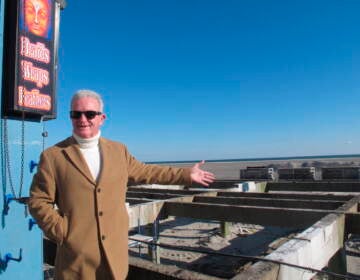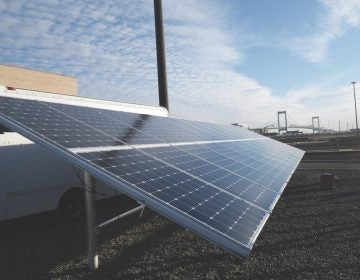78 Project follows in the steps of Alan Lomax’s legendary folk recordings
Music has become more digitized than ever, yet two documentary filmmakers seek to recapture the wonder of field recordings on good ol’ acetate.
Using a single microphone and a 1930s direct-to-disc Presto recording machine, Mt. Ephraim native Lavinia Jones Wright and friend Alex Steyermark co-founded The 78 Project, a web series inspired by Alan Lomax, a field collector of folk music, and “his quest to capture music where it lived throughout the early 20th century.”
“We are all searching for a sense of community, an outlet for personal expression, and trying to find our place in history. It feels like the right time to explore our shared cultural legacy once again in earnest,” said Jones Wright.
Lomax’s “tireless, lifelong journey to record the world’s folk life and draw the connections between different cultures,” inspired Jones Wright and Steyermark to continue his legacy, traveling the country and helping musicians record once-in-a-lifetime 78 records while filming the process for their web series. Though they only started the series in September 2011, musicians such as Roseanne Cash, Loudon Wainwright III, The Mynabirds and Lisa Hannigan quickly caught on to the concept and have recorded their own 78.
Last summer, The 78 Project was invited to the Independent Filmmaker Project’s (IFP) Independent Film Week as part of the Spotlight on Documentaries forum. Shortly after, the pair completed fundraising to begin filming their full-length feature documentary.
“When the idea of the documentary film came up, we knew it would be the perfect opportunity to take the recording road trips we’d been dreaming about since the start,” said Jones Wright.
Steyermark explained, “One of the things we’ve come to really appreciate about Lomax’s work is that he had to physically travel to some fairly remote places to find the music he was recording. Because we’re using a piece of equipment from the 1930’s, there’s no other way for us to create these recordings other than to travel hundreds or thousands of miles and be physically present. It’s the ultimate analog experience in what’s becoming a very digital world. That’s why these road trips we’re taking feel so essential to what we’re trying to explore with our project.”
In January, the pair spent two “magical, meaningful, productive and practically indescribable” weeks in California,” said Jones Wright. They were able to film ten recording sessions “all in wildly different places with wonderful artists.”
Steyermark explained that, “Each artist is asked to choose a classic song from the Public Domain to perform, something that that they’d like to put their own personal spin on – a Murder Ballad, an old blues, bluegrass or Appalachian folk song.” Then they record one of their own songs on the flip side of the 78. The artist also chooses a “location that holds meaning for them,” explained Jones Wright. “It can be their home or a place they love – anywhere they are comfortable that has a great feel and enough room for us to camp out for a few hours.”
Because a 78 is a one-take record, the location is just as important as the song because it can change the tone of the recording.One of the more interesting aspects of the recording process is seeing the reactions of the artists, explained Steyermark. “Many of the artists we work with have been recorded hundreds of times in every format imaginable, we find it beautiful how moved they are by their experience making a field recording.”
Jones Wright agrees that the moment in which they play back the 78 is beautiful. It is a brave decision to “take on the risks required to perform a song for recording in one take… But no matter what potential there was for failure, it is always a success – each artist’s 78 is perfect, because it is a moment captured in time.”
One particularly beautiful moment happened while recording with Coati Mundi. Jones Wright explained, “As the evening progressed, and we gathered around a meal his sister had made, they started to reminisce about growing up in New York City, dancing together, going to concerts, and making records in the recording booths that used to be in Midtown Manhattan. Coati suddenly remembered that he had the first acetate he’d ever made when he was a teenager. He brought it down from upstairs, we put it on our turntable, and he and his sister danced around the kitchen. It was the perfect way to end the evening before we hit the road.”
Other highlights of the trip included a private tour of the Apollo Masters factory which manufactures acetates for The 78 Project, recording with Ben Vaughn at “the end of civilization” in Wonder Valley, seeing Jaron Lanier’s “matchless collection of musical instruments,” and recording with John Doe, Victoria Williams, John C. Reilly and Tom Brosseau, and Adam Levy and Gaby Moreno.
They plan to finish shooting for the documentary by the beginning of the summer.
WHYY is your source for fact-based, in-depth journalism and information. As a nonprofit organization, we rely on financial support from readers like you. Please give today.




